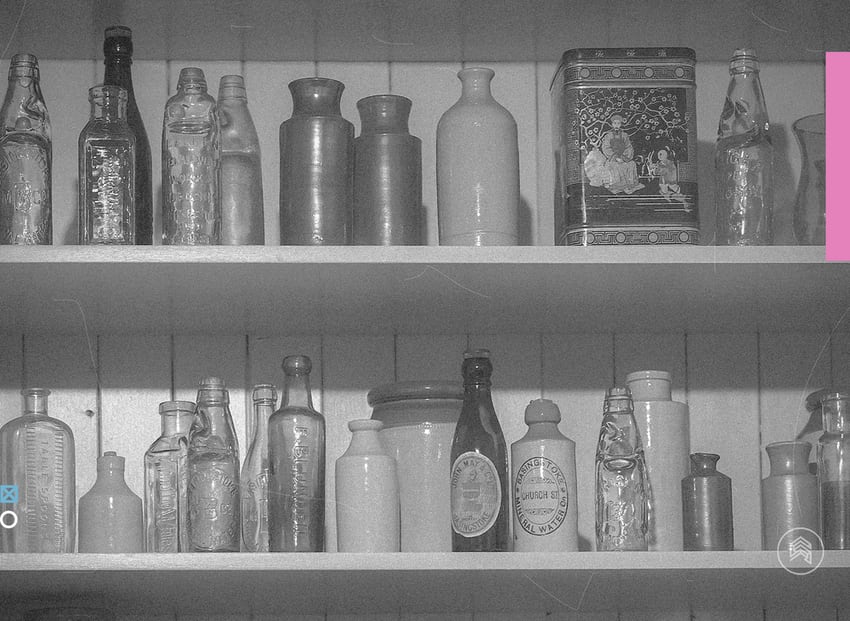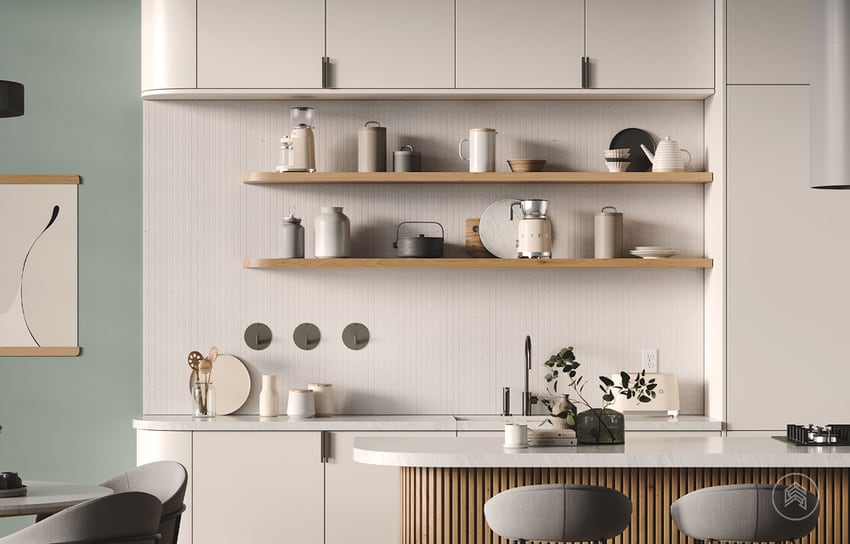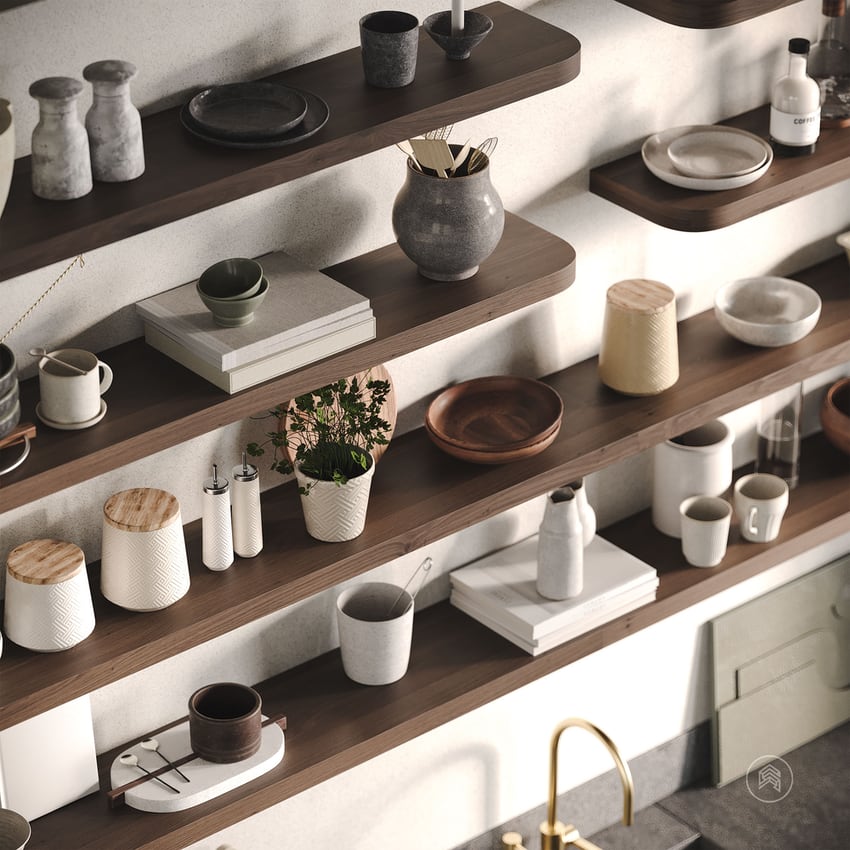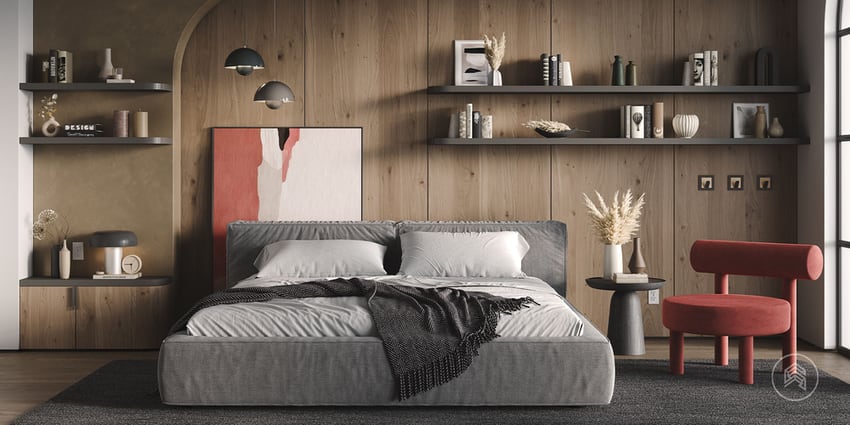It hardly seems possible that there was ever a world without shelving and bookcases. However, like all inventions, this structure that makes our lives more organized and beautiful was likely not around forever! Here at Shelfology, we’re obsessed with all things “shelf.” Today, we’d like to drop a bit of knowledge on you about the history of floating shelves, kitchen shelving, and shelving in general. Are you ready?

The “First” Shelf
It’s impossible to know exactly where, when, or how the first “shelf” graced the walls of our ancient ancestors. But tracing written records and architectural history, one of the earliest precursors to the modern-day shelf were the storage units at the back of Christian churches prior to the medieval era. This bookcase-like structure was called an ambry (or aumbry). These ancient shelf-ancestors were used to store religious texts, often on scrolls, for reference by the clergy.

As the need for storing books grew, thanks to the printing press (which was invented in 1440), so did the need for larger, free-standing bookshelves. From the design behind the ambry came the traditional bookshelf that we know of today. Eventually, bookshelves filled libraries and homes as printed materials like books became more readily available and affordable for the common person.
The Pre-1920s Kitchen

Shelving has always been pretty necessary in the kitchen space; you need access to plates, bowls, flatware, pots, pans, and other baking and cooking necessities at a moment’s notice! However, what most people don’t know is that traditional cabinets with doors and hardware didn’t become mainstream until the 1920s.
Prior to the cabinet movement, mainly driven by the then “minimalist” design for Bauhaus’ Haus am Horn, kitchens were an amalgamation of hand-crafted open shelves. This was a fluid, easy way for homeowners to add shelving where they needed it to maximize space and the efficiency of their workflow. After all, most women of that time period had to spend much of their days in the kitchen (luckily, times have changed!).
Until the 1920s, there was no “standard” for kitchen design. Kitchens of this age were a combination of drawers, varied work surfaces, stand-alone sinks with open undersides and four legs, and the beautiful cast iron stove and oven combination piece. Some people may have had mounted, closed cabinets on their walls for ease of storage, but a coherent design was rare; kitchens were created for function over form, that’s for sure.
The “Modern” Kitchen

With the introduction of Bauhaus as a standard for kitchen design, closed cabinet shelving really began to take off. As with any trend, the Bauhaus style became mainstream, increasing the demand for closed shelving that was minimalist in nature. People began to realize that you could achieve a clean, uniform look by using matching shelving with doors to hide everything. For at least a couple of decades, this look was the “modern kitchen.”
The 40s: The Kitchen Evolution
By the 1940s, the Bauhaus trend had evolved into a new way to express one’s style. Finally, the kitchen was a room that could be changed to match almost any decor or theme. Thanks to the revelation in the 20s, kitchens were now as beautiful and functional as the rest of the home; they weren’t just a place to cook food in. Some kitchens also doubled as eat-in kitchens, due to the fact that they were no longer rooms that served function over form.
In fact, in the 1940s, we started to see some open shelving and floating shelving reappear. We think it’s so fun to see how trends wax and wane; however, they never truly disappear. Plus, the open shelf will always have a place in other areas of the home, regardless of its status in the kitchen during any given decade.
Open Shelves vs Cabinets: An Age-Old Argument

The reason that kitchen open shelving has popped in and out of popularity is due to the debate regarding the cleanliness of open shelving. Now, we’re not going to judge and make a ruling that goes one way or the other; however, proponents of open shelving in the kitchen state that if you put everyday objects on your open shelves, you won’t have an issue with grease and dust on your dishware. In fact, many people who have tried and loved open shelving say the same thing.
However, if you really want everything to be out of sight and out of mind, closed cabinetry is probably for you. The beauty of interior design is that you get to choose for yourself how you want your space to look!
The Return of Open Shelving
Personally, we’re pretty stoked that open shelving is so popular. We love the way it looks—we especially love seeing how our customers choose to design and style their own shelving after installing and taking the time to design a room or wall just for a shelving project.
There’s nothing more satisfying than taking a step back to admire that handiwork—it’s just like the pre-1920s kitchens: simple and functional. There is an inherent beauty to displays like that; the time and effort alone are apparent and commendable.
Shelfology Floating Shelves

Are you excited about the comeback of the open shelving trend? Perhaps you have open shelves in your kitchen or somewhere else in your house! Regardless, shelving won’t ever go out of style because it’s functional. You’ll just get some radical bonus points if it’s styled well, right?
Here at Shelfology, we pride ourselves on designing, developing, and distributing 100% American-made, contractor-grade floating shelves, floating shelf brackets, and traditional wall shelves. These bad boys will stand up to anything you throw at them, let alone a little grease from your hard work in the kitchen. Better yet, they’ll look good doing it, too.
So go ahead—browse our radical selection of solid hardwood floating shelves, razor-thin steel shelves, and combination shelves. We challenge you to find something that won’t fit your next project perfectly.




